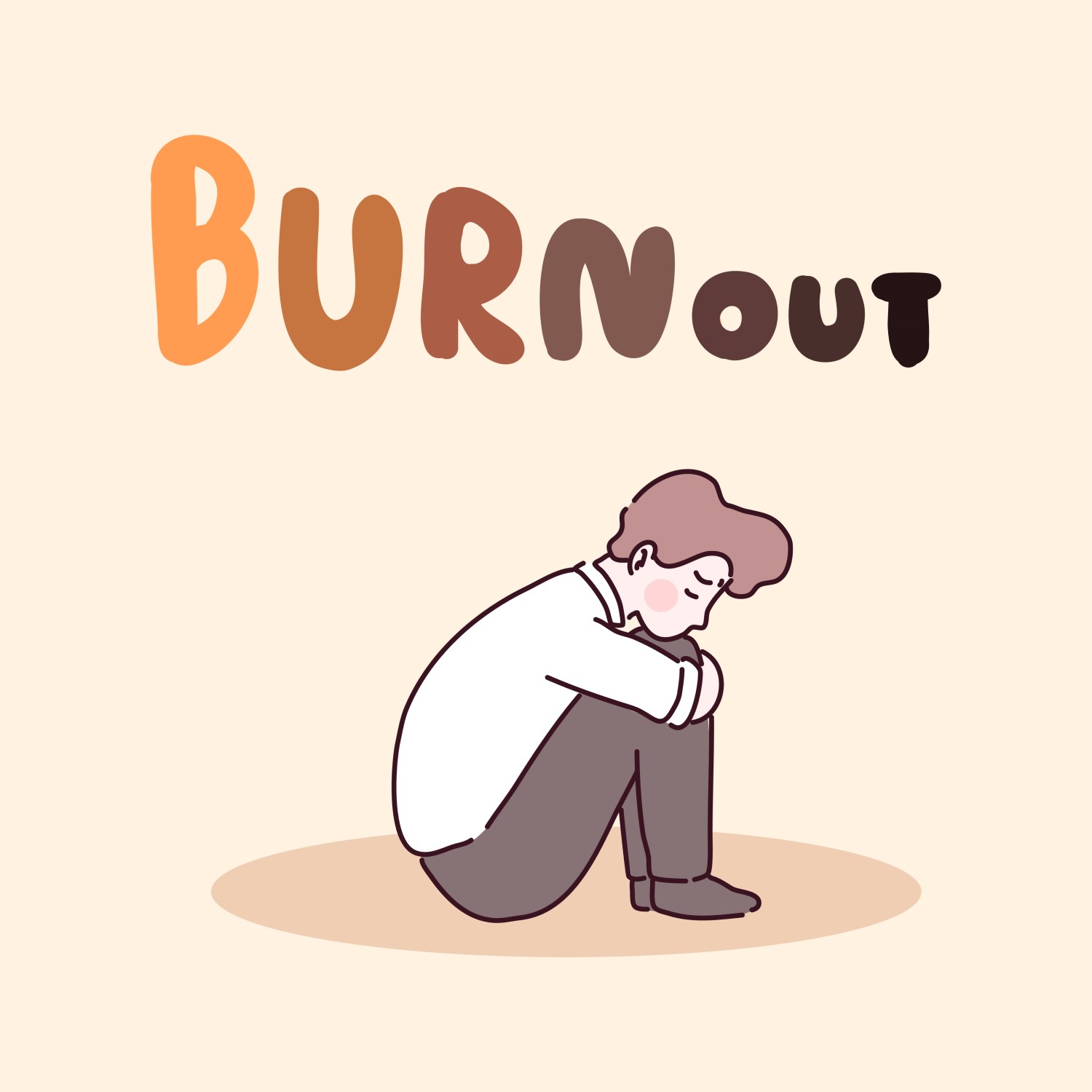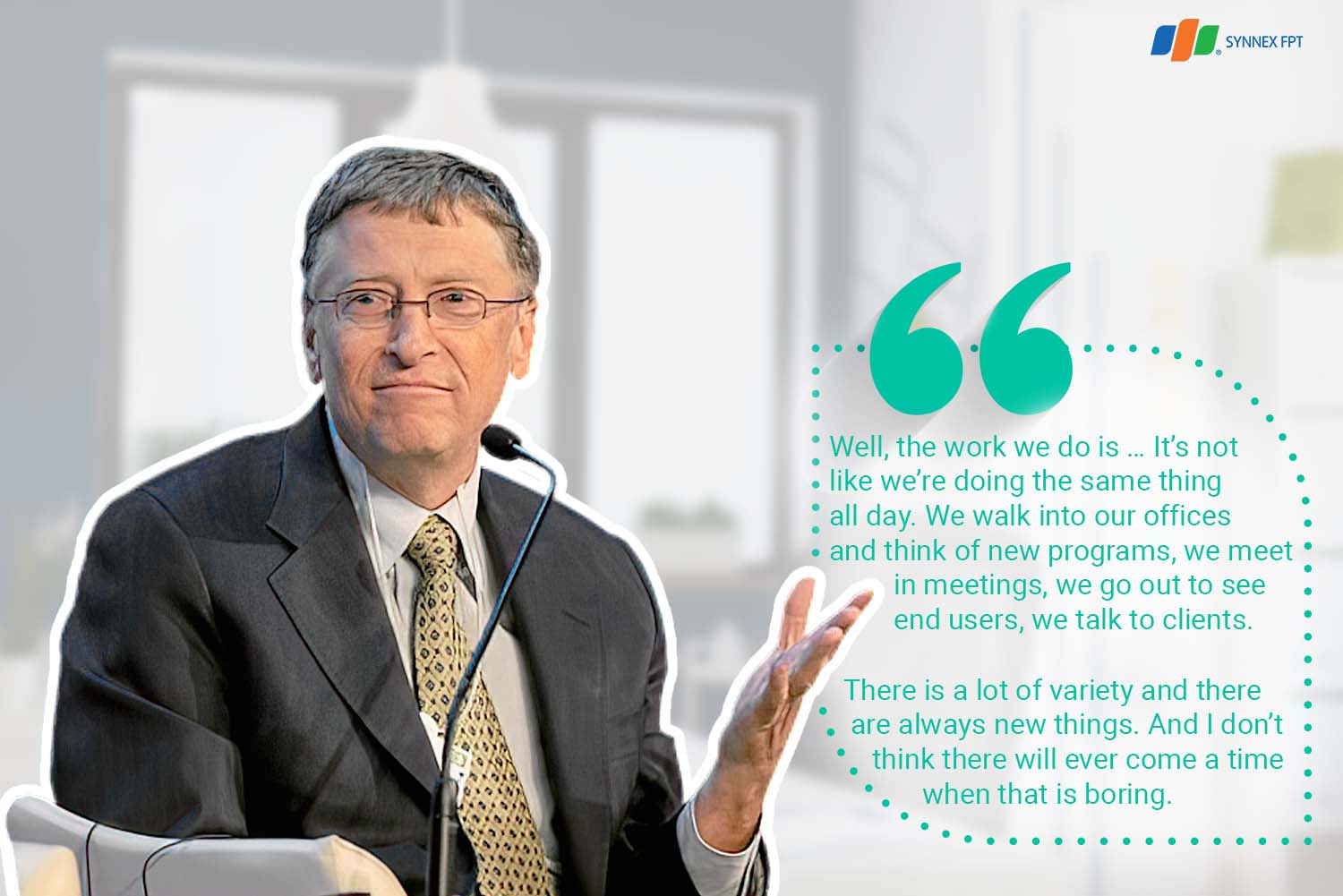There are times when we feel exhausted, anxious, and insecure in any career, therefore it is not surprising that the term “burnout” in the office is a professional phenomenon recognized by WHO
Bill Gates has retired from Microsoft and is focusing on charity initiatives. He is presumably not anxious or stressed about work at the age of 66, a situation known as “burnout.” However, as a Microsoft executive 28 years ago, Gates had the most ludicrous “secrets” to get through the most difficult periods.
There are numerous viewpoints on how to deal with workplace stress, but none quite like the one Biil Gates expressed in a televised interview (Bill Gates was only 28 years old at the time of the interview). According to Bill Gates, the key to avoiding burnout syndrome is to avoid working in a loop.
When asked specifically about his lengthy working hours and whether he ever experienced stress or burnout, he said “No,” and here are his reasons:
“Well, the work we do is … It’s not like we’re doing the same thing all day. We walk into our offices and think of new programs, we meet in meetings, we go out to see end users, we talk to clients. There is a lot of variety and there are always new things. And I don’t think there will ever come a time when that is boring.”
Diversity in work and looking for new challenges are solutions?
Bill Gates stated in the interview that his work does not tire him out because it is diverse and makes him more active. That is the key to assisting Gates in overcoming the years of continual work. However, it should be noted that Microsoft’s nature favors comfort, excitement, and originality, and not everyone can operate in such environments.
What other ways to avoid ‘burnout’?
Bill Gates’ case is unique in that he works in an environment that encourages excitement and creativity. His position also allows him to work freely, without looping and challenging himself in a variety of new projects. Take on a variety of new projects to stretch yourself. So, how do we solve this problem for more unskilled workers like us?
Christina Maslach, a psychology professor at the University of California, has developed a widely used method to assess user burnout (the Maslach Burnout Inventory). This assessment considers the three primary indications of burnout: burnout, lack of motivation, and performance. If you are experiencing this issue and are unable to avoid everyday repetitive duties, you can employ the following strategies:
- Collaborate with colleagues instead of solving problems alone
- Reduce workplace noise
- Enhance natural light
- Communicate often (even a little “eight” things) with colleagues
- Get enough sleep and should take a nap
- Regular exercise, meditation
Conclusion
Burnout syndrome is defined by the World Health Organization (WHO) as the outcome of chronic workplace stress that workers are unable to handle. This disorder, in addition to impairing work productivity, leads the “patient” to experience prolonged sensations of worry and anxiety. Some people, though, can tolerate it better than others.
According to The American Institute of Stress, 83% of American workers suffer one or more types of work-related stress. This is why, every day, a million people quit their employment. The Covid-19 outbreak has exacerbated this problem because working from home steadily blurs the boundary between work and family life.








No comment